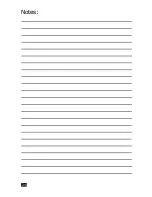
22
HEALTHY CHOICES
E v e ry penny you spend on food should be an
investment in good health.
If you understand your body’s food needs, and
f o o d ’s contribution to good health, you can put
your food dollar to its best use.
When planning your own healthy, economic
meals, you should choose a variety of foods fro m
the four basic food groups, and avoid foods with
too much salt, sugar and fat.
When in season, fresh fruits and vegetables
a re a good buy, and they have little to no fat, and
no sugar or salt added. Most canned and
seasoned frozen vegetables have salt added, and
some frozen and canned fruits have sugar added.
Plan to have about four servings of vegetables
per day and two servings of fresh fruit. One
s e rving is one half cup of fruit or vegetables.
Food in this group gives you most of your
vitamin A and C. Vitamin A is needed for healthy
skin and vitamin C helps you resist infection and
keeps your gums healthy. Vegetables that are
dark green and deep yellow in color and citru s
f ruits are healthy choices.
Whole grain and enriched breads, cere a l s ,
rice, and grains are good sources of vitamin B,
which help your body use the food you eat for
e n e rg y. Breads and cereals also provide Iron and
P rotein and whole grain products provide fiber.
To stretch your food dollar use whole
grain products as side dishes. Plan to use
seven servings per day from the bread and
cereal group.
The milk and cheese group is an import a n t
s o u rce of calcium, the nutrient that keeps bones
s t rong. Have two servings of milk or cheese a
d a y. One serving is an eight ounce cup of milk or
one and one third ounce of natural cheese.
To make your food dollar go furt h e r, try less
expensive forms of milk, skim milk or non-fat
d ry are usually less expensive, and they have no
fat. Many cheeses, yogurts, ice cream, and ice
milk are high in fat or have sugar in them.
The meat group includes red meats, fish,
p o u l t ry, dried peas and beans, soybeans, seeds,
nuts, peanut butter and eggs. These foods
p rovide protein, which helps build and re p a i r
skin, bones, hair, blood and muscles. They are
also good sources of Vitamin B6. To lower the
amount of fat, choose lean meats. Having peanut
butter and dried beans and peas will add variety
to your meal and are most often less expensive.
To avoid too much fat, salt and sugar, know
w h e re to look. Fats are found naturally in some
foods like poultry, fish, and chocolate. Fats that
a re added to your diet are butter, marg a r i n e ,
salad dressings, mayonnaise, gravies and
s h o rt e n i n g .
To cut down on fat levels choose foods low in
fat, and pre p a re foods the low-fat way: trim fats
f rom meats, and remove skin from poultry.
Instead of frying, bake, broil or boil. Season with
herbs and spices, instead of butter or margarine.
Sugar can be found in many forms, such as
s y rups, molasses, and honey. Soft drinks are also
mostly sugar. Sugar is high in calories. In most
cases, sugar in baked products can be cut in half
without a noticeable diff e rence in texture and in
some recipes sugar can be cut out completely.
In place of sugar, use a substitute such as
a s p a rt a m e .
The best way for you to be sure you’re eating
healthy is to use fresh fruits and vegetables,
whole grain breads, low-fat milk and lean meats
and to prepare food from scratch. Pre-made
foods always contain salt, sugar, fats and
preservatives.
While there is not an ideal diet, healthy
choices are using the four basic food gro u p s .
Avoiding sugar, salts and fats can also impro v e
your eating habits for a healthy diet, and that
makes good sense.
Summary of Contents for Thunder Stick Pro
Page 25: ...24 Notes ...




































